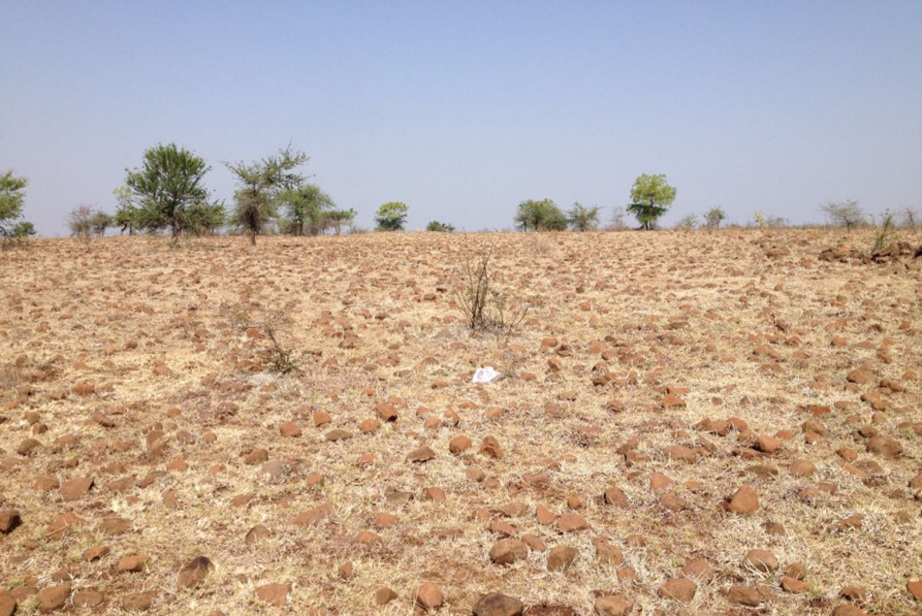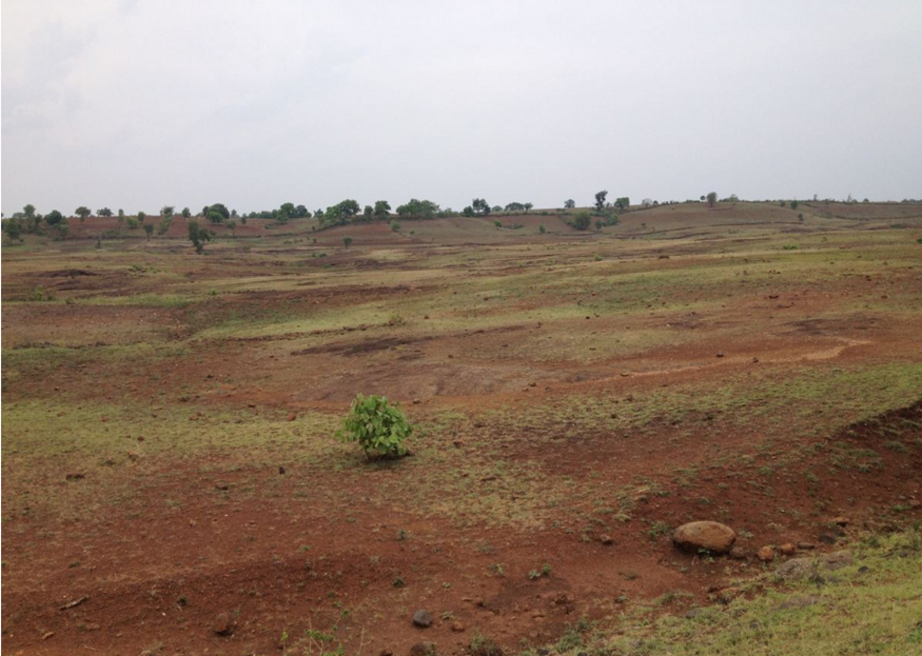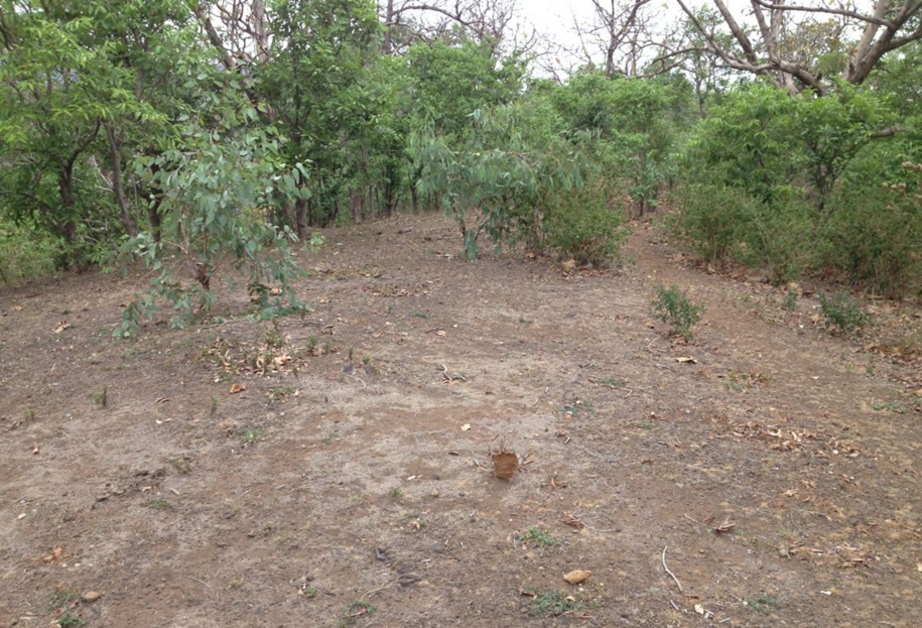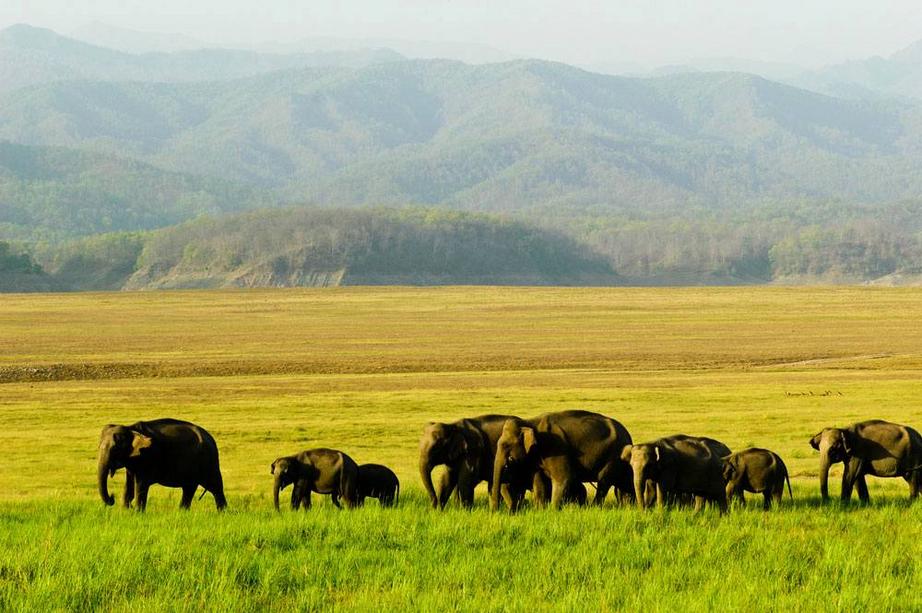Lizard DNA reveals India’s grasslands are likely pre-human – and need protection
Unexpected diversity of a family of lizards in India implies that tropical grasslands are not human-made ecosystems as often argued.
- Researchers have described 5 species of lacertid lizards in the genus Ophisops in India’s tropical grasslands, but recent genetic research shows there may be at least 30 species.
- Tropical grasslands have been largely ignored by the Indian government, according to researchers, and are hugely threatened by conversion to agriculture.
- Recognizing tropical grasslands as pre-human, natural ecosystems with rich biodiversity and endemic species may be the first step to better protection.
It started out as an interest in lacertids – a family of small lizards native to Asia, Europe, and Africa – an itch to “understand what was going on with these lizards,” according to Dr. Ishan Agarwal, biologist at Villanova University, Pennsylvania.
Lacertids are abundant in India, where there are ten known species, but scientists believe there may be dozens more that remain undescribed.
Agarwal’s desire to better understand lacertids led him and colleague Dr. Uma Ramakrishnan, a molecular ecologist at the Ecology and Evolution department of the National Centre for Biological Sciences (part of the Tata Institute of Fundamental Research in Bangalore), to make an unexpected discovery recently published in the Journal of Biogeography. The rich diversity of lacertids implies that many grasslands and other open habitats likely predate humans and have underestimated biodiversity.
The team analyzed DNA from Indian lacertids found in several Indian tropical grassy biomes (TGBs), mainly of the genus Ophisops (collectively known as snake-eyed lizards).

Jerdon’s snake-eye (Ophisops jerdonii) – one species of lacertid that had its DNA analyzed by the scientists. Photo credit: Ishan Agarwal

An open habitat in Osmanabad District, Maharashtra, home to the Jerdon’s snake-eye (Ophisops jerdonii). A growing body of studies suggests that many grasslands and other open areas are natural ecosystems – contrary to the common belief that they were formed by human activities – and harbour native, endemic species. Photo credit: Ishan Agarwal.
Using analytical techniques that have only been developed over the last five to ten years – including statistical analyses of diversification rates and standard DNA sequencing technology – the team attempted to reconstruct the evolutionary history of the Ophisops. By doing so, they sought to answer questions about the origin of these snake-eyed lizards – and the habitat they call home.
The authors argue in their paper that Indian snake-eyed lizards likely have “a history spanning millions of years with hugely underestimated diversity” – a clue that the grasslands they are found in are of ancient origin. According to Agarwal, while there are only five known species of Ophisops in India, genetic data suggests that there could actually be at least 30.
“If all Indian grasslands were actually recent and caused by humans, you would expect much lower diversity and a recent history in these habitats,” explained Agarwal. “As this study, and much work on grasses in India and globally demonstrates, these are natural ecosystems, implying that they will have a number of native, endemic species.”
Agarwal and his colleagues collected the lizards in the study over the course of the last decade – including one field trip specifically dedicated to collecting lacertids. In the summer of 2015, the team travelled a month around Central India, scouring Karnataka, Maharashtra, Chhattisgarh, and Madhya Pradesh for select lizards.
“It was very interesting to travel through these landscapes,” Agarwal recollected. “[W]e also drove past the Tropic of Cancer, ate some delicious food and met a lot of Forest Department people!”

Habitat of Jerdon’s snake-eye and other lizards – Günther’s writhing skink (Lygosoma guentherii), the lined writhing skink (L. lineata), the Indian garden lizard (Calotes cf. versicolor) and the fan-throated lizard (Sitana sp) – in Betul District, Madhya Pradesh, India. Photo credit: Ishan Agarwal.
The team’s study feeds a growing body of evidence that many savannas and grasslands, which cover approximately 20 percent of the Earth’s land surface, are likely pre-human and hold far richer biodiversity than we think.
“[Tropical grasslands] are home to most of the extant mammalian megafauna on Earth, and are the source of origin for important grain crops (e.g., millet and sorghum),” reads a 2014 study from Trends in Ecology & Evolution. “[T]oday, an estimated one-fifth of the global human population depends directly on them for their livelihoods, including the use of uncleared lands for grazing, fuel wood, food, and medicinal plants.”
However, these grasslands have always been seen as “poor cousins of the other dominant biome of the tropics – forests,” according to a separate study published in 2016 in the Philosophical Transactions of the Royal Society B.
And with just fleeting conservation attention tropical grasslands and the endemic species they house have ended up gravely threatened by human activities – and neglected by conservationists and governments.
“It is essential that we understand the proportion of native and derived grassy biomes in India, as increasing amounts of land are diverted to large-scale developmental activities,” wrote Agarwal and Ramakrishnan in an early version of their paper. “Native, old-growth grassy biomes must be recognized as unique, biodiversity-rich habitats that require urgent conservation attention.”
In India, this lack of protection is apparent. Because grasslands were not considered natural habitats when first classified in India, the nation has adopted a decided bias towards forest-centric conservation.
The researchers point out that over 40% of grasslands have been lost in India over the last 130 years, according to a 2014 study, although they say the real figure is probably even worse.

Amravathi District, Maharashtra, habitat of Beddome’s snake-eye (Ophisops beddomei). Tropical grassy biomes and other open areas house a huge variety of wildlife. Photo credit: Ishan Agarwal.
Rock removal, in particular, greatly harms wildlife in India’s open habitats – a fact that has been largely ignored by officials.
“Rocks are often the only above-ground thermal refugia for small vertebrates and invertebrates, and their removal or even displacement can cause local extinctions and is a serious threat to the biodiversity of native open habitats,” wrote the scientists in the early draft of their paper.
They point out that land owned by the Forest Department is often demarcated by rock walls collected from the habitat, taking away habitat for snake-eyed lizards.
“We surveyed many habitats that had most or all loose rocks removed and either saw very few or no animals of the Ophisops jerdonii complex, including an area that supported high populations in 2012,” the scientists wrote. “It is imperative that the ramifications of this seemingly innocuous activity are understood and broadly communicated.”
Agarwal noted that the Indian Forest Departments treat tropical grassy biomes as unimportant ecosystems.
“In fact, large expanses of grassland have been converted to monoculture plantations at the behest of the Forest Departments,” he said.
But maybe the research on humble lizards could help explain to policymakers why these areas require more study – and much better protection.
“The idea that the lacertids would be an interesting system to study predates my PhD,” said Agarwal, who collected his first lacertids in 2007 to 2008. “However, even I was struck by their tremendous diversity and I did not realize how important and undervalued these native habitats with high endemic biodiversity are.”
Not merely undervalued, but unsung and under threat.
For the rest of this article please go to source link below.

